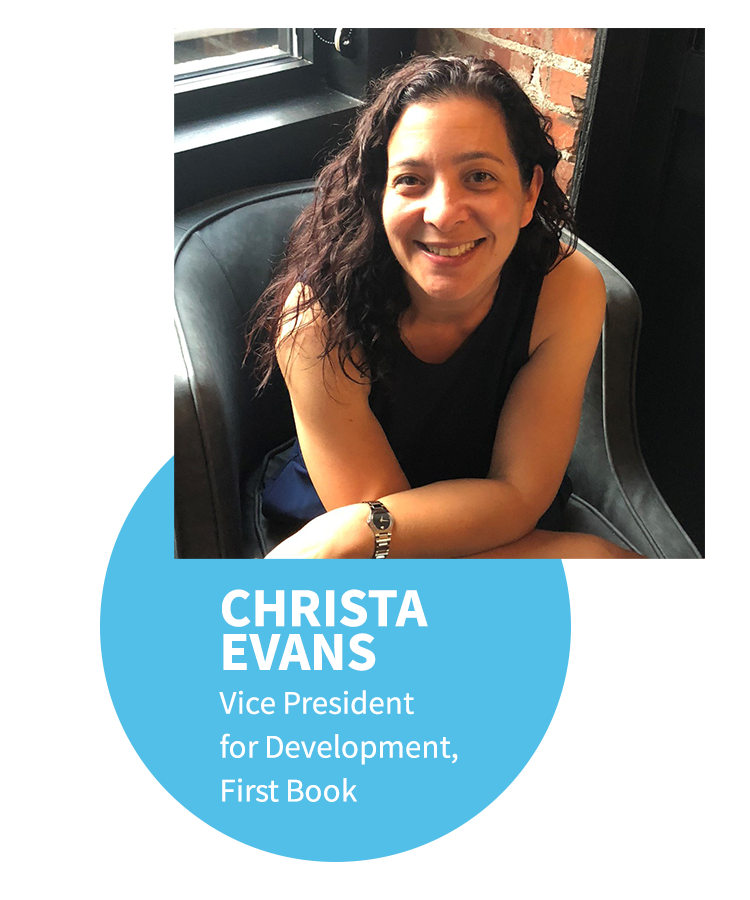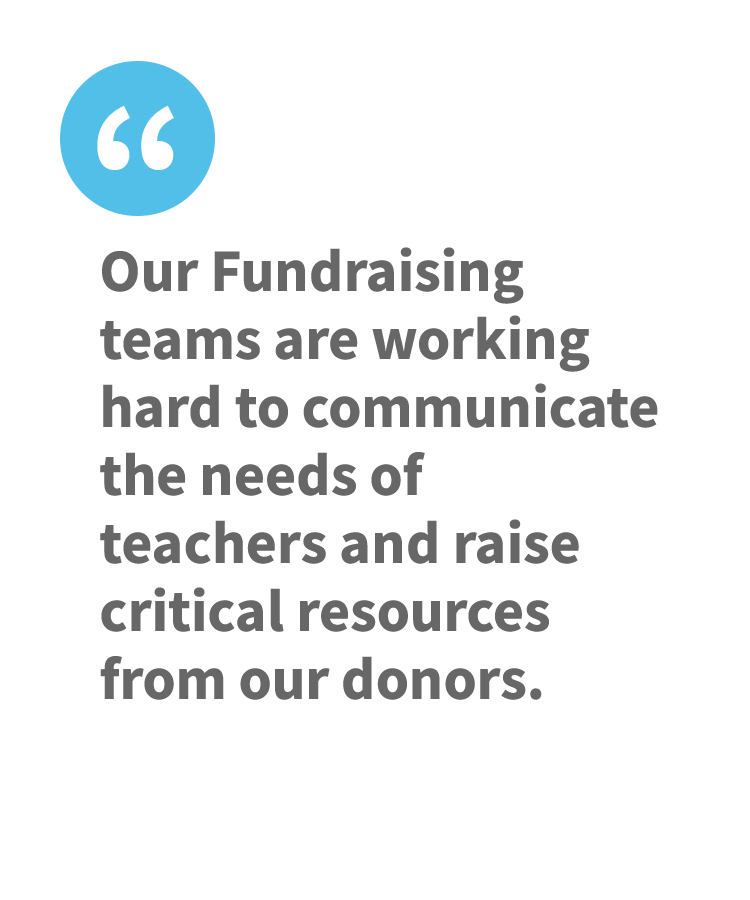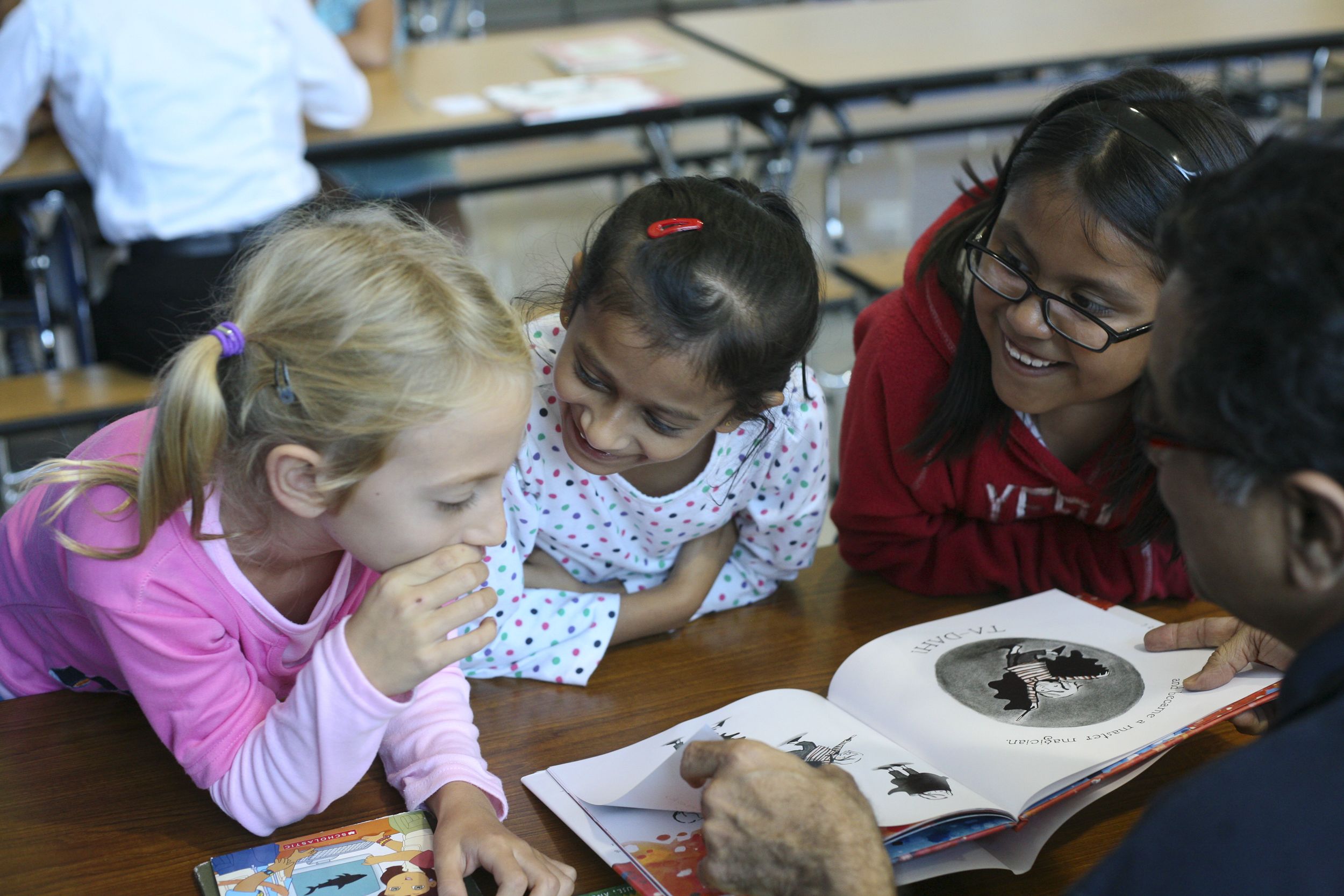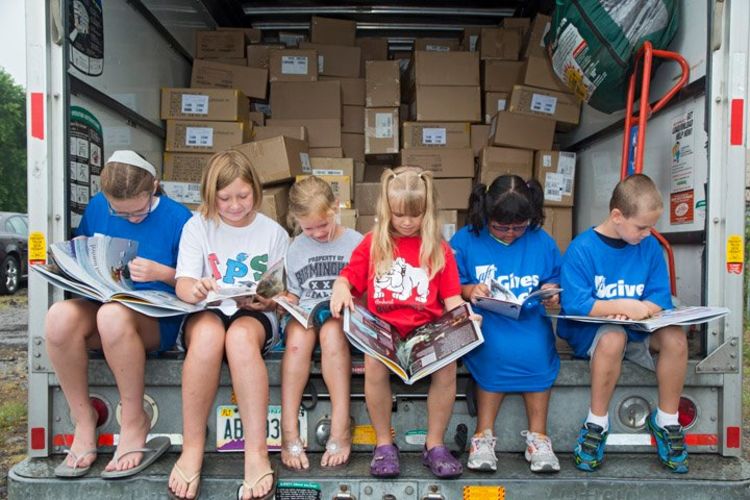First Book
Founded in 1992 by a group of social entrepreneurs who wanted to help students in poverty, First Book believes that access to quality education represents the best path out of poverty.



First Book has distributed 185 million books and other materials to educators in all 50 states and 10 Canadian provinces. Its network is made up of 450,000 educators—a number that increases by 1,000 teachers each week.
First Book keeps expanding; it now serves five million disadvantaged children each year. As Christa Evans, vice president for development at First Book, notes, such growth could only be possible via collaboration and the technology that fosters it.
Has First Book changed how it operates to foster growth?
Evans: Previously, because we couldn’t effectively gather and share data, our departments were forced to work in silos. One team often didn’t see the same information as others. Data sharing and data collection didn’t become possible between teams until very recently, with the help of tools like Salesforce. While we’re still very early on in our integration of Salesforce, one of the things we're learning is that in this age of technology, there’s no need for us to struggle to understand what other teams are up to, or at what level our donors are engaging with us. Our ability to share data and make real-time strategic decisions is changing how we’re working together and making us more creative, efficient, and effective.

A volunteer with Tata Steel with students at a reading party.
A volunteer with Tata Steel with students at a reading party.
How has collaboration spurred growth at First Book?
It has helped us develop a sharper picture of how our donors and educators are engaging with us. Previously, we lacked a strong CRM [customer relationship management system] that allowed us to understand donor affinity and behavior — how much they’ve given in the past, and what types of issues and messages they respond to. Now, with a sharper focus on our data, we can use that information to drive strategy. Before we upgraded, our strategies were often based on anecdotal evidence. Now, we can point at data as we make decisions on new programs or projects. It’s helping our teams come up with innovative ways to help educators and students and fulfill our mission.
Could you give me an example of how this flow of data has helped?
Let’s look at our back-to-school fundraising campaigns. The back-to-school effort each year is incredibly collaborative across our organization, focusing on both the teachers we serve and the donors who provide the support we need to fulfill our mission. As our Engagement team is working with hundreds of thousands of teachers to identify and provide the resources they’ll need for their students for the first few weeks of school, including things like pencils or backpacks, our Marketing & Communications team is doing outreach to educators, donors, and the public. Our Fundraising teams are working hard to communicate the needs of teachers and raise critical resources from our donors. And, along the way, each department is gathering information and data that is shared across the teams to help each of us do our jobs more efficiently and effectively.
For another example, let’s look at our Research & Insights team, which is responsible for gathering information and feedback from our educators. That team had asked educators, “How often are your students dealing with trauma, either at home or in their communities?” We wanted to understand what issues our teachers are facing in the classroom so we can better equip them.

Kids in Alabama cracked open their books right there in the back of the truck during a distribution sponsored by long-time First Book partner
Kids in Alabama cracked open their books right there in the back of the truck during a distribution sponsored by long-time First Book partner
Using the data gathered from Research & Insights last year, our Accelerator team collaborated with experts in the field to quickly translate those educator responses into a resource teachers could use in their classrooms. The result, our Trauma Toolkit, gives teachers an overview of the causes and symptoms of trauma, and provides steps educators can take.
With a better understanding of teacher need in this area, the Development team is able to communicate with donors and solicit support for efforts like the Trauma Toolkit. Our donors care about helping eliminate barriers to education for students in need —– and with stories like the Trauma Toolkit, we are able to speak intelligently about the need, whether it’s in a donor’s own community or elsewhere, and help match their interests with their giving.
First Book has distributed 185 million books and other materials to educators in all 50 states and 10 Canadian provinces. Its network is made up of 450,000 educators—a number that increases by 1,000 teachers each week.
First Book keeps expanding; it now serves five million disadvantaged children each year. As Christa Evans, vice president for development at First Book, notes, such growth could only be possible via collaboration and the technology that fosters it.

Has First Book changed how it operates to foster growth?
Evans: Previously, because we couldn’t effectively gather and share data, our departments were forced to work in silos. One team often didn’t see the same information as others. Data sharing and data collection didn’t become possible between teams until very recently, with the help of tools like Salesforce. While we’re still very early on in our integration of Salesforce, one of the things we're learning is that in this age of technology, there’s no need for us to struggle to understand what other teams are up to, or at what level our donors are engaging with us. Our ability to share data and make real-time strategic decisions is changing how we’re working together and making us more creative, efficient, and effective.

A volunteer with Tata Steel with students at a reading party.
A volunteer with Tata Steel with students at a reading party.
How has collaboration spurred growth at First Book?
It has helped us develop a sharper picture of how our donors and educators are engaging with us. Previously, we lacked a strong CRM [customer relationship management system] that allowed us to understand donor affinity and behavior — how much they’ve given in the past, and what types of issues and messages they respond to. Now, with a sharper focus on our data, we can use that information to drive strategy. Before we upgraded, our strategies were often based on anecdotal evidence. Now, we can point at data as we make decisions on new programs or projects. It’s helping our teams come up with innovative ways to help educators and students and fulfill our mission.
Could you give me an example of how this flow of data has helped?
Let’s look at our back-to-school fundraising campaigns. The back-to-school effort each year is incredibly collaborative across our organization, focusing on both the teachers we serve and the donors who provide the support we need to fulfill our mission. As our Engagement team is working with hundreds of thousands of teachers to identify and provide the resources they’ll need for their students for the first few weeks of school, including things like pencils or backpacks, our Marketing & Communications team is doing outreach to educators, donors, and the public. Our Fundraising teams are working hard to communicate the needs of teachers and raise critical resources from our donors. And, along the way, each department is gathering information and data that is shared across the teams to help each of us do our jobs more efficiently and effectively.
For another example, let’s look at our Research & Insights team, which is responsible for gathering information and feedback from our educators. That team had asked educators, “How often are your students dealing with trauma, either at home or in their communities?” We wanted to understand what issues our teachers are facing in the classroom so we can better equip them.

Kids in Alabama cracked open their books right there in the back of the truck during a distribution sponsored by long-time First Book partner
Kids in Alabama cracked open their books right there in the back of the truck during a distribution sponsored by long-time First Book partner
Using the data gathered from Research & Insights last year, our Accelerator team collaborated with experts in the field to quickly translate those educator responses into a resource teachers could use in their classrooms. The result, our Trauma Toolkit, gives teachers an overview of the causes and symptoms of trauma, and provides steps educators can take.
With a better understanding of teacher need in this area, the Development team is able to communicate with donors and solicit support for efforts like the Trauma Toolkit. Our donors care about helping eliminate barriers to education for students in need —– and with stories like the Trauma Toolkit, we are able to speak intelligently about the need, whether it’s in a donor’s own community or elsewhere, and help match their interests with their giving.
First Book has distributed 185 million books and other materials to educators in all 50 states and 10 Canadian provinces.

So, using data collaboratively has also changed how First Book approaches donors?
Absolutely. Data drives strategy and enhances our ability to convey need to our donors. It’s much more powerful to tell a donor with confidence that 70 percent of the kids our educators serve are from low-income families. It’s more effective than dealing in generalizations or using composite anecdotes. Every single thing we do is driven by the needs of the teachers in our network, and data helps us paint a picture of the landscape they work in.
Using the toolkit as an example, we’ll show it to donors and explain to them why it’s necessary. There are 35 million children who have experienced some form of trauma. Anything we can do to show donors the depths of the issues, precisely and by using data, is a big help. Again, we’re early in our Salesforce integration, but I can say with confidence that because data is driving our fundraising strategy, we are already seeing donation increases and returns on that investment.
In what other ways has this new approach to data helped First Book?
In the past, we couldn’t share and analyze data in real time. Since much of our fundraising efforts are campaign-related, that was problematic. I need to see how things are going as a campaign is happening, and the dashboard feature in Salesforce helps me see results midstream, sometimes several times a day if necessary. It’s important to be able to assess how a given campaign is performing, so we can make changes, pivot, or pull something back if it’s not working.
On the direct mail side, we’ll look at the giving data, regularly focusing on key metrics like response rate and average gift. With the dashboard, there’s no lag time in getting that information. I can see how things are going when I need to.



